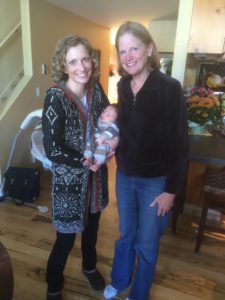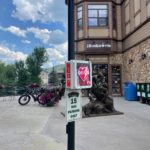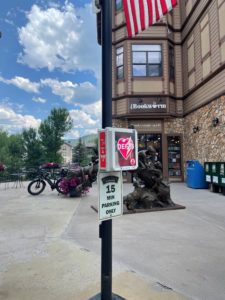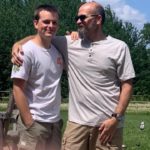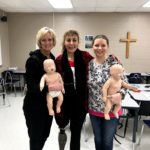
Uncategorized

Sheriff deputy credits his CPR training for helping to save a car accident victim’s life

By Gina Mayfield
On a Friday afternoon, just an hour or two before he’d clock out for the weekend, Deputy Sheriff Jason Roy patrolled the outer perimeter of the Berkshire County Jail in Pittsfield, Massachusetts.
“I happened to have our county dispatch radio on and was just listening to calls come in,” Jason says. “On one particular call, I heard the address given: 465 Cheshire Road. I was at 467 Cheshire, literally seconds from that location.”
Then came the details: One vehicle accident. Airbags deployed. Unconscious operator.
Jason immediately headed in that direction, hoping to do what he could — maybe help direct traffic — while the fire department, EMTs and police worked the scene. But he arrived to find three bystanders pulling a man from a car. He was unconscious but breathing. Jason put his car in park as he directed the bystanders to roll the man on his side, in the recovery position.
That’s when everything changed.
“He’s not breathing anymore,” yelled the bystanders.
They rolled the man on his back and ripped open his shirt knowing that an AED was on its way.
“He’s gray and there’s no pulse,” Jason says. He begins compressions and thinks to himself, I’m going to give you compressions until you’re a pancake or you come back. You’re not going to die, you’re going to live. You’re not going to die on me right here. This is not how it’s going to happen. There’s no way.
“I’ve never done this before, responded to this type of situation where I’ve had to do CPR. This is my very first time,” he says. But it’s what he has done that makes all the difference. “I’ve had 21 years of CPR training. Every year all of our employees at the Sheriff’s Office, whether we’re uniformed or civilian staff, have the same exact CPR training, the American Heart Association’s Basic Life Support program.”
The fire department and EMTs arrive and begin administering shocks using the AED.
“I’m standing just beyond them, and I look up and see the Assistant Deputy Superintendent of our training, then I see our Sheriff behind him,” Jason says. “They saw the training in action. This is what we do on paper. This is what we do in the classroom with our CPR training, manikins and training AEDs. All of the scenarios that we practice and drill for is so that at moments like this we can have the best possible outcome.”
That’s what they got in that moment, the best possible outcome. As they loaded the man on the ambulance, Jason quickly popped his head in and asked an EMT, “Is he breathing?” Not only was he breathing, the EMT said, but they had gotten a pulse. Off they went to the hospital.
The Fire Chief said to the Sheriff, “Wow, because of your officer’s response, those early compressions and CPR, that’s why that man’s breathing right now. That’s why we got him back.”
In retrospect, Jason remembers that during his CPR classes the instructors always said, “When you actually have to respond a call, you’re going to revert to your training. What you’re doing here in the classroom — what you practice; what you read; the physical, real application tests you take with the manikins and the AED — you’ll flip that switch and do it.”
But after 20-plus years of sitting in a classroom and hearing that, Jason began to wonder, What are the chances of this happening to me?
But when his time came, he learned the instructors were right. “It just clicked. There was never any doubt. I knew what to do. I just flashed back to the training,” he says.
In the days that followed the congratulations poured in, some from coworkers and colleagues who had listened to the radio call in real-time. Then came a formal Commendation from The Commonwealth of Massachusetts, Berkshire County Sheriff’s Office that read, in part, “Your vigilance, situational awareness and adherence to your training undoubtedly saved the life of this individual.”
“I did what anybody else who would have heard that call or driven by that scene would have done if they were a Sheriff’s employee. I’m confident they would have pulled over, even if they didn’t have a radio, even if they were off duty or just a civilian,” Jason says. “That’s what we do at the Sheriff’s Office here. Every one of our employees could have done, and is trained to do, what I did.”
Visit our Hands-Only CPR webpage to learn the two easy steps to save a life and check out the AHA Basic Life Support page to learn more about this course.
Son saves father’s life with CPR
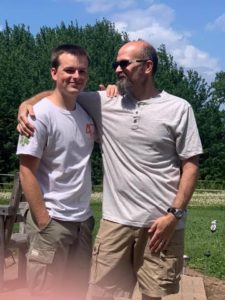
Pictured above: Lucas and Robert Weme
By Gina Mayfield
On a Minnesota summer day, as the Weme family played in the backyard, 47-year-old Robert Weme stepped outside to join his wife, children and grandchildren. As he sat on the deck, his 20-year-old son, Lucas, noticed something about his dad seemed off.
“I went over and asked him what was going on, and he said he had passed out in the kitchen. At that point, I was getting kind of worried,” Lucas says. “Then he passed out on the deck and started to seize.”
Lucas’ mom and sisters ran over and made sure the grandkids were okay as they called 911. “My dad didn’t have a pulse, so I just started CPR on him. I did about 30 compressions, then he started to come back to,” Lucas says.
Robert answered questions and seemed awake and alert, and just as everyone thought he was out of the woods, everything changed. “Shortly after the first responder got there, my dad ended up going back into seizure fit. We couldn’t find a pulse,” Lucas says. After another round of 30 compressions, then another, Robert regained consciousness then went back out again. “I did more compressions and then they slapped the AED on him and shocked him,” Lucas says. “He was in V-tach.”
V-tach is short for ventricular tachycardia, a heart rhythm disorder caused by abnormal electrical signals in the lower chambers (ventricles) of the heart causing a very rapid heart rate. It can last for just a few seconds, or much longer, and cause cardiac arrest.
EMTs got an IV established and headed straight for St. Mary’s hospital in Duluth. Lucas and his mom were never far behind and reached the ER shortly after the ambulance. “One of the drivers actually came out and talked to us. She said my dad was pretty stable throughout the whole transport, he was talking, alert and oriented,” Lucas says. “Then they led us back into the ER.”
What the ambulance driver may not have known was that his otherwise healthy, 47-year-old patient biked or lifted weights for about an hour every day, including the day before this incident – and was a paramedic himself. And Lucas was a pre-med student hoping to follow his dad’s footsteps into emergency medicine. He had been a licensed EMT for two years, from the time he was 18, and currently serves with Carlton Fire and Ambulance. That’s where he learned CPR.
When Lucas and his mother got back into the ER, Robert had something he wanted to say to his son. “He said that he loved me and was very proud of what I did. He said he wouldn’t be here without me doing what I did,” Lucas says.
Robert was right. The survival rate for an out-of-hospital cardiac arrest is around 11 percent.
A few days later after being diagnosed with idiopathic cardiomyopathy, Robert left the hospital with a defibrillator and a family with its sense of humor still firmly intact.
“Even though I work on an ambulance too, my dad was actually my first patient to code. I guess he wanted to have the glory of being my first one,” Lucas says with a smile.
Join a Nation of Heartsavers today at cpr.heart.org/heartsaver. #CPRwithHeart
Zumba student saves the life of her instructor after she suffers a cardiac arrest in class

Adela Alvarez and Nan Martin
By Marissa Alanis
Nan Martin hadn’t planned on attending the Zumba class that her friend and instructor, Adela Alvarez, taught at Hope Community Church in Rogers, a small town in the Minneapolis–St. Paul area.
But wintry weather on Jan. 9, 2014 led Martin’s personal trainer to cancel their appointment. Undeterred by the weather, Martin didn’t want to stay at home. She headed to the Zumba class instead, which was the first time she attended Alvarez’s Thursday night class. Martin usually went to her class on Monday nights.
Alvarez, who was 49, taught at least five Zumba classes each week in addition to working as a high school Spanish teacher. Halfway through the class, Alvarez decided to give the students a water break.
“She is leaning against the wall, taking a sip of water and she almost looked right through me and she just said, ‘I don’t feel well,” Martin recalled. “She just collapsed.”
Martin, who had renewed her AHA CPR training a week before, immediately checked Alvarez’s pulse while another student ran to call 911. Martin detected a faint pulse and gave Alvarez two rescue breaths.
Martin checked her pulse again. There was no pulse. The dispatcher, who was on the phone by this time, told Martin to start compressions and remained on the line to guide her.
“She would say ‘Speed it up’ or ‘You’re going too slow’,” Martin recalled. “She helped me keep my pace up, which was great.”
As Martin did CPR, she sang the song Stayin’ Alive, which has the right beat for performing chest compressions. When performing CPR, rescuers should push on the chest at a rate of 100 to 120 compressions per minute.
“It’s so weird, but I wasn’t scared,” she said. “I was amazed at the adrenaline – the whole adrenaline rush. I knew what I had to do and it’s so different when you’re doing CPR on a manikin versus when you’re doing CPR on someone you love.”
Martin performed CPR for about 25 minutes before emergency help arrived at the church, which is located in a rural area. First responders from about three to four nearby communities arrived. The paramedics shocked Alvarez’s heart five times before rushing her to the hospital.
In the first week of hospitalization, Alvarez had kidney failure and liver failure. She started to become weak. Doctors had to use an ECMO machine to help her heart. But Alvarez experienced complications and lost circulation in her right leg. Doctors had to amputate her leg above the knee.
It was about 45 days after her cardiac arrest that Alvarez started to come out of her coma.
“When they take me out of the medicines for the coma, they were able to do a CAT scan and the doctors came out and literally say to my husband, ‘It’s a miracle. Her brain has zero damage. It was as if nothing happened,” she said.
Alvarez spent about three months in the hospital. She attributes her faith in God, prayers from family and friends and gratitude with helping her survive and recover.
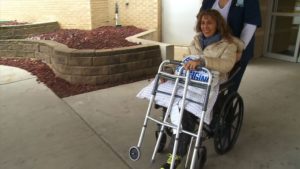
“I know that God was there all the time with me,” she said. “Even though it wasn’t easy because in the recovery, I remember feeling a lot of physical pain. …I was so grateful to be alive. That was my thing – be grateful. I’m alive. I say ‘It’s ok. I don’t have a leg. I can’t live without a heart. It’s okay if I live without a leg.’
Pictured above: Adela leaving the hospital.
Later in 2014, Alvarez received the Zumba Fitness Inspiration Award at the Zumba convention in Orlando. A nurse who was also a Zumba instructor was inspired by Alvarez’s story at the event that she helped lead efforts to teach CPR to Zumba instructors. CPR is now taught to instructors at the annual convention.
Alvarez is now an AHA CPR instructor who teaches BLS and runs a CPR training business. She teaches once a month at the high school where she previously worked as a Spanish teacher.
“I love it,” she said. “I share my story in every class. After I share my story, it changes the point of view of the people in the class.”

Pictured above: Adela, center, is now a CPR training instructor.
Martin has followed Alvarez’s footsteps and now is a Zumba instructor. Martin said Alvarez is never far from her thoughts.
“I really miss dancing with her,” she said. “Number one – she is an amazing woman. Even before all of this happened, Adela is just one of those shining lights who walks into the room and you can feel it come off of her. Her classes were amazing.”
Martin said she urges the public to take a CPR training class because it can save the life of someone you know or love.
“I just can’t emphasize enough – take it,” she said. “A lot of people say,’ I’ll never need that. I’ll never use that.’ Never say never because you know never know when a 49-year-old fit woman is going to drop in front of you.”
This National CPR and AED Awareness Week, learn more about how you could save the life of a loved one or someone you know by learning CPR today.
